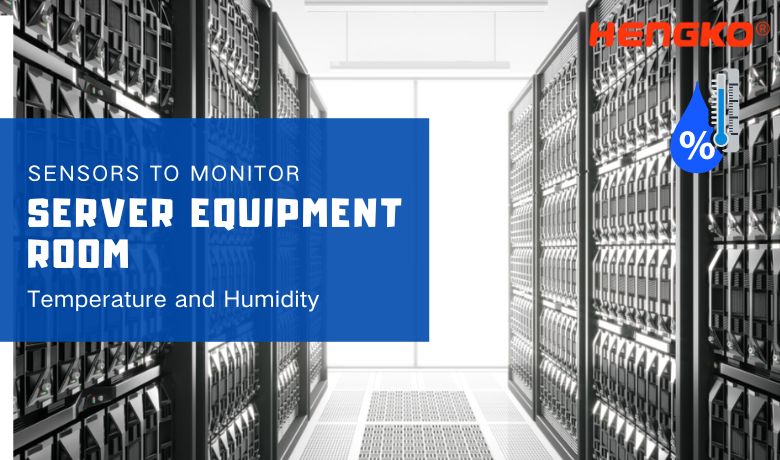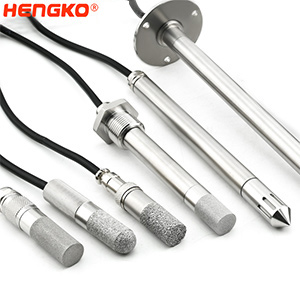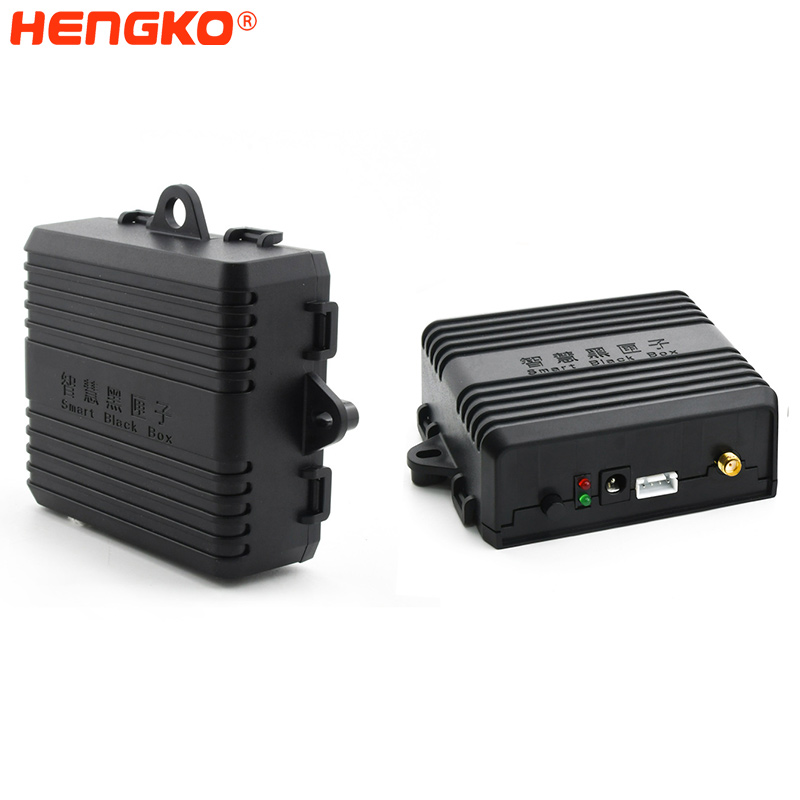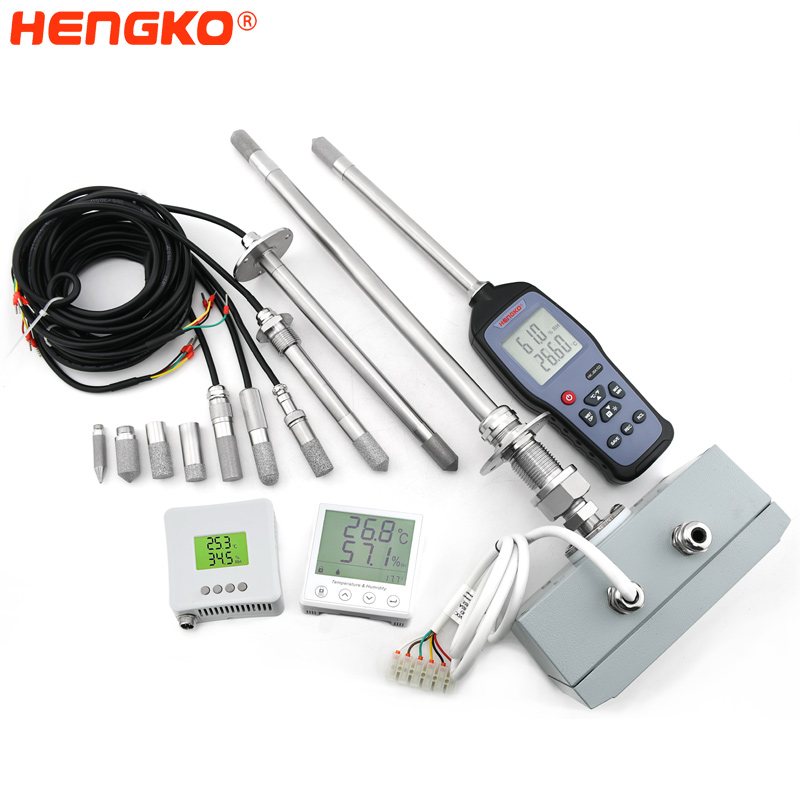
Server room environment monitoring systems can monitor 24 hours is crucial to ensure enterprises' information security and intellectual property rights.
What can the environment monitoring system provide for the server equipment room?
1. Why is Monitoring Temperature and Humidity in Server Rooms Important?
Server rooms, often housing critical IT infrastructure, play a pivotal role in the smooth functioning of businesses and organizations. Ensuring the right temperature and humidity levels in these rooms is paramount for several reasons:
1. Equipment Longevity:
Servers and related IT equipment are designed to operate within specific temperature and humidity ranges. Prolonged exposure to conditions outside these ranges can reduce the lifespan of the equipment, leading to frequent replacements and increased costs.
2. Optimal Performance:
Servers can overheat if the temperature is too high, leading to reduced performance or even unexpected shutdowns. Such incidents can disrupt business operations, leading to potential revenue loss and damage to an organization's reputation.
3. Preventing Hardware Damage:
High humidity can lead to condensation on the equipment, which can cause short circuits and permanent damage. Conversely, low humidity can increase the risk of electrostatic discharge, which can also damage sensitive components.
4. Energy Efficiency:
By maintaining the optimal temperature and humidity levels, cooling systems operate more efficiently. This not only reduces energy consumption but also leads to significant cost savings in the long run.
5. Data Integrity:
Excessive heat or moisture can compromise the integrity of data stored in servers. Data corruption or loss can have dire consequences, especially if backups are not recent or comprehensive.
6. Cost Savings:
Preventing hardware failures, reducing the frequency of equipment replacements, and optimizing energy consumption all contribute to significant cost savings for an organization.
7. Compliance and Standards:
Many industries have regulations and standards that mandate specific environmental conditions for server rooms. Monitoring ensures compliance with these standards, avoiding potential legal and financial repercussions.
8. Predictive Maintenance:
Continuous monitoring can help in predicting potential problems before they become critical. For instance, a gradual increase in temperature might indicate a failing cooling unit, allowing for timely intervention.
In essence, monitoring temperature and humidity in server rooms is a proactive measure to ensure the reliability, efficiency, and longevity of critical IT infrastructure. It's an investment in safeguarding an organization's operations, data, and bottom line.
What we should care for Server Room Temperature and Humidity Monitor ?
1、 Alert and Notifications
When the measured value exceeds the predefined threshold, an alarm will be triggered: LED flashing on the sensor, sound alarm, monitoring host error, email, SMS, etc.
Environmental monitoring equipment can also activate external alarm systems, such as audible and visual alarms.
2、 Data Collection and Recording
The monitoring host records the measurement data in real time, stores it in memory regularly, and uploads it to the remote monitoring platform for users to view it in real-time.
3、 Data Measurement
Environmental monitoring equipment, such as temperature and humidity sensors, can display the measured value of the connected probe and can intuitively read the temperature
and humidity data from the screen. If your room is relatively narrow, you can consider the installation of a temperature and humidity sensor with a built-in RS485 transmitter; the
data will be transferred to the computer outside the room to view the monitoring.

4、 Composition of Environmental Monitoring System in Server Room
Monitoring terminal: temperature and humidity sensor, smoke sensor, water leakage sensor, infrared motion detection sensor, air conditioning control module,
power-off sensor, audible and visual alarm, etc. Monitoring host: computer and HENGKO intelligent gateway. It is a monitoring device carefully developed by
HENGKO. It supports 4G, 3G, and GPRS adaptive communication modes and supports a phone that fits all kinds of networks, such as CMCC cards, CUCC cards,
and CTCC cards. Various application scenarios are suitable for various industries; Each hardware device can operate independently without power and network
and automatically access the supporting cloud platform. Through computer and mobile app access, users can realize remote data monitoring, set an abnormal alarm,
export data, and perform other functions.
Monitoring platform: cloud platform and mobile app.
5、 Ambient temperature and humidity monitoring of server room
Temperature and humidity monitoring in the server room is a very important process. Electronics in most computer rooms are designed to operate
within a specific humidity range. High humidity can cause disk drives to fail, leading to data loss and crashes. In contrast, low humidity increases the
risk of electrostatic discharge (ESD), which can cause electronic components' immediate and catastrophic failure. Therefore, strict control of temperature
and humidity helps ensure the machine's normal and efficient operation. When selecting the temperature and humidity sensor, under a certain budget,
try to select the temperature and humidity sensor with high precision and fast response. The sensor has a display screen that can view in real-time.
HENGKO HT-802c and hHT-802p temperature and humidity sensors can view temperature and humidity data in real-time and have a 485 or 4-20mA output interface.
7、 Water Monitoring in the Server Room Environment
The precision air conditioner, ordinary air conditioner, humidifier, and water supply pipeline installed in the machine room will leak. At the same time, there
are various cables under the anti-static floor. In case of water leakage cannot be found and treated in time, leading to short circuits, burning, and even fire
in the machine room. The loss of important data is irreparable. Therefore, installing a water leakage sensor in the server room is very important.
How to Monitor Temperature and Humidity in Server Rooms?
Monitoring temperature and humidity in server rooms is crucial for maintaining the health and performance of IT equipment. Here's a step-by-step guide on how to effectively monitor these environmental conditions:
1. Choose the Right Sensors:
* Temperature Sensors: These sensors measure the ambient temperature in the server room. They come in various types, including thermocouples, resistance temperature detectors (RTDs), and thermistors.
* Humidity Sensors: These measure the relative humidity in the room. Capacitive and resistive humidity sensors are the most common types used.
2. Select a Monitoring System:
* Standalone Systems: These are independent systems that monitor and display data on a local interface. They are suitable for smaller server rooms.
* Integrated Systems: These are designed to integrate with Building Management Systems (BMS) or Data Center Infrastructure Management (DCIM) systems. They allow for centralized monitoring of multiple server rooms or data centers.
3. Implement Real-time Alerts:
* Modern monitoring systems can send real-time alerts via email, SMS, or even voice calls when conditions go beyond set thresholds.
This ensures immediate action can be taken.
4. Data Logging:
* It's essential to maintain a record of temperature and humidity levels over time. Data logging capabilities allow for trend analysis, which can be crucial for predictive maintenance and understanding the environmental patterns of the server room.
5. Remote Access:
* Many modern systems offer remote monitoring capabilities through web interfaces or mobile apps. This allows IT personnel to check server room conditions from anywhere, anytime.
6. Redundancy:
* Consider having backup sensors in place. In case one sensor fails or provides inaccurate readings, the backup can ensure continuous monitoring.
7. Calibration:
* Regularly calibrate the sensors to ensure they provide accurate readings. Over time, sensors can drift from their original specifications.
8. Visual and Audible Alarms:
* In addition to digital alerts, having visual (flashing lights) and audible (sirens or beeps) alarms in the server room can ensure immediate attention in case of anomalies.
9. Power Backup:
* Ensure that the monitoring system has a backup power source, like a UPS (Uninterruptible Power Supply), so it remains operational even during power outages.
10. Regular Reviews:
* Periodically review the data and check for any consistent anomalies or patterns that might indicate a larger issue.
11. Maintenance and Updates:
* Ensure that the monitoring system's firmware and software are regularly updated. Also, periodically check the physical components for any signs of wear or damage.
By implementing a comprehensive monitoring strategy, organizations can ensure that their server rooms maintain optimal conditions, thereby safeguarding their IT equipment and ensuring uninterrupted operations.
What are the Ideal Conditions for Server Room ?
Maintaining the right environmental conditions in server rooms is crucial for the optimal performance and longevity of IT equipment.
But It's better for you to clear know what is the idea or great condition for server room. Here's a breakdown of the ideal conditions:
1. Temperature:
* Recommended Range: The American Society of Heating, Refrigerating, and Air Conditioning Engineers (ASHRAE) suggests a temperature range of 64.4°F (18°C) to 80.6°F (27°C) for server rooms. However, modern servers, especially those designed for high-density computing, might operate efficiently in slightly higher temperatures.
* Note: It's essential to avoid rapid temperature fluctuations, as this can cause condensation and stress on the equipment.
2. Humidity:
* Relative Humidity (RH): The recommended RH for server rooms is between 40% and 60%. This range ensures that the environment is neither too dry (risking static electricity) nor too moist (risking condensation).
* Dew Point: Another metric to consider is the dew point, which indicates the temperature at which air becomes saturated with moisture and can't hold any more, leading to condensation. The recommended dew point for server rooms is between 41.9°F (5.5°C) and 59°F (15°C).
3. Airflow:
* Proper airflow is crucial to ensure even cooling and prevent hotspots. Cold air should be supplied at the front of the servers and exhausted from the back. Raised floors and overhead cooling systems can help manage airflow effectively.
4. Air Quality:
* Dust and particulates can clog vents and reduce the efficiency of cooling systems. It's essential to ensure that the server room is clean and that the air quality is maintained. Using air purifiers or regularly replacing air filters can help.
5. Other Considerations:
* Redundancy: Ensure that cooling and humidification systems have backups in place. In case of a primary system failure, the backup can kick in to maintain the ideal conditions.
* Monitoring: Even if the conditions are set to the ideal range, continuous monitoring is crucial to ensure they remain stable. Any deviations can be addressed promptly.
In conclusion, while the above conditions are generally recommended for server rooms, it's essential to consult the specific guidelines provided by the equipment manufacturers. They might have specific temperature and humidity requirements for their products. Regularly reviewing and adjusting the environmental conditions based on the equipment's needs and performance metrics will ensure the server room operates efficiently and prolongs the life of the IT equipment.
Where to Place Temperature and Humidity Sensors in Server Rooms ?
The placement of temperature and humidity sensors in server rooms is crucial for obtaining accurate readings and ensuring optimal conditions. Here's a guide on where to position these sensors:
1. Near Heat Sources:
* Servers: Place sensors near servers, especially those known to produce more heat or are critical to operations.
* Power Supplies and UPS: These components can generate significant heat and should be monitored.
2. Inlet and Outlet Air:
* Cold Air Inlets: Position a sensor near the cold air inlet of the cooling system to measure the temperature of the air entering the server racks.
* Hot Air Outlets: Place sensors near the hot air outlets or exhausts to monitor the temperature of the air being expelled from the servers.
3. Different Heights:
* Top, Middle, Bottom: Since heat rises, it's a good idea to place sensors at different heights within the server racks. This provides a vertical temperature profile and ensures that no hotspots are missed.
4. Perimeter of the Room:
* Position sensors around the perimeter of the server room, especially if it's a large room. This helps in identifying any areas where external heat or humidity might be influencing the room's conditions.
5. Near Cooling Systems:
* Position sensors close to air conditioning units, chillers, or other cooling systems to monitor their efficiency and output.
6. Near Entry and Exit Points:
* Doors or other openings can be sources of external influence. Monitor the conditions near these points to ensure they aren't adversely affecting the server room's environment.
7. Away from Direct Airflow:
* While it's essential to monitor the air from cooling systems, placing a sensor directly in the path of a strong airflow can lead to skewed readings. Position sensors in a way that they measure ambient conditions without being directly blasted by cold or hot air.
8. Redundancy:
* Consider placing more than one sensor in critical areas. This not only provides a backup in case one sensor fails but also ensures more accurate readings by averaging the data from multiple sources.
9.Near Potential Moisture Sources:
If the server room has any pipes, windows, or other potential sources of moisture, place humidity sensors nearby to detect any increase in humidity levels promptly.
10. Central Location:
For a holistic view of the server room's conditions, place a sensor in a central location away from direct heat sources, cooling systems, or external influences.
In conclusion, the strategic placement of sensors ensures comprehensive monitoring of the server room's environment. Regularly review the data from these sensors, recalibrate them as needed, and adjust their positions if the server room's layout or equipment changes. Proper monitoring is the first step in ensuring the longevity and optimal performance of your IT equipment.
How Many Sensors for a Given Space in Server Rooms?
Determining the number of sensors required for a server room depends on various factors, including the room's size, layout, the density of equipment, and the cooling system's design. Here's a general guideline to help you decide:
1. Small Server Rooms (Up to 500 sq. ft.)
* At least one sensor for temperature and humidity near the main rack or heat source.
* Consider an additional sensor if there's a significant distance between equipment or if the room has multiple cooling or airflow sources.
2. Medium-sized Server Rooms (500-1500 sq. ft.)
* A minimum of 2-3 sensors distributed evenly across the room.
* Place sensors at different heights within the room to capture vertical temperature variations.
* If there are multiple racks or aisles, consider placing a sensor at the end of each aisle.
3. Large Server Rooms (Above 1500 sq. ft.):
* Ideally, one sensor every 500 sq. ft. or near each major heat source.
* Ensure sensors are placed near critical equipment, cooling system inlets and outlets, and potential problem areas like doors or windows.
* For rooms with high-density equipment or hot/cold aisles, additional sensors might be needed to capture variations accurately.
4. Special Considerations
* Hot/Cold Aisles: If the server room uses a hot/cold aisle containment system, place sensors in both the hot and cold aisles to monitor the efficiency of the containment.
* High-Density Racks: Racks packed with high-performance equipment can produce more heat. These might require dedicated sensors to monitor closely.
* Cooling System Design: Rooms with multiple cooling units or complex airflow designs might need additional sensors to monitor each unit's performance and ensure even cooling.
5. Redundancy:
Always consider having a few extra sensors as backups or for areas where you suspect potential issues. Redundancy ensures continuous monitoring even if a sensor fails.
6. Flexibility:
As the server room evolves – with equipment being added, removed, or rearranged – be prepared to reevaluate and adjust the number and placement of sensors.
In conclusion, while these guidelines provide a starting point, the unique characteristics of each server room play a significant role in determining the number of sensors required. Regularly reviewing the data, understanding the room's dynamics, and being proactive in adjusting the monitoring setup will ensure that the server room remains within optimal environmental conditions.
Also You Can Send Us Email Directly As Follow : ka@hengko.com
We Will Send Back With 24-Hours, Thanks for Your Patient !
Post time: Mar-23-2022







